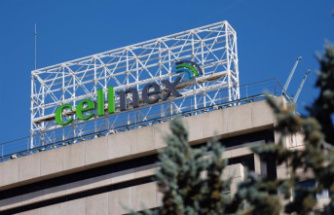La La Land may be the heavy favourite to win Best Picture at next weekend’s Academy Awards, but Hidden Figures is winning in the category we usually use to judge a film’s success.
With more than $144 million (all figures U.S.) at the domestic box office, it is the current leader of the nine nominated films in an exceptionally weak year. While the Oscars arguably shouldn’t be about how much the films earn, the low ticket sales of this year’s Best Picture nominees is calling attention to the huge gap between the Academy and the box office.
At the time the nominees were announced, none of the films had broken $100 million in North America. If the critical darling Moonlight wins, its $21-million take would make it one of smallest-earning winners ever.
By comparison, last year’s Ryan Reynolds superhero hit Deadpool has earned $363 million, while Disney-Pixar’s animated sequel Finding Dory reeled in $486 million. Both were shut out of Oscar nominations entirely.
Since the nominations, however, three of the films — La La Land, Hidden Figures and Arrival — have hit the $100 million threshold, proving that while the box office doesn’t guide the Oscar nominations, it can work the other way around.
“Actually winning the (Best Picture) Oscar doesn’t really matter all that much, by and large. If you win, you might get another $10 million bump. But it’s actually people going to see the film after it has been nominated that drives the box office,” says Bruce Nash, founder of The-numbers.com, which tracks box-office data and trends.
“Really, it’s the nomination that counts. For La La Land, for example, just that nomination has likely added $20 or $30 million to the box office for that film.”
Nash says the cramming by everybody who wants to catch all the films after they’re nominated isn’t always visible at the box office, in part because many of these smaller nominated films are available on demand. Arrival and Hacksaw Ridge, for instance, can both be viewed on iTunes, which doesn’t factor into box-office tallies.
Critics point to a disconnect between the artier films that the Academy rewards as opposed to movies that people actually pay to see in a theatre. This is not a new phenomenon, and hit a peak at the 2008 awards, where box office titan The Dark Knight failed to get a Best Picture nomination.
The following year, the Academy expanded the nominees up to 10 films the following year, in order to give more commercial films a chance. Avatar made the cut but lost out to The Hurt Locker, winning the crown despite earnings of only $17 million at the time.
But could it be that the nominees — even this year — are more crowd-pleasing than they seem?
“When you look back at the ’70s, ’80s, even the ’90s, $100 million movies were much more of a rarity,” explains David Poland, editor of moviecitynews.com. “It has really changed in the last 10 to 15 years. Now a blockbuster really starts at $200 million.
Although it pales next to, say, the $408 million earned by Captain America: Civil War, the $129 million gross of La La Land is significant.
“There has been a lot of talk about the end of dramatic films, but it’s just that when you are overshadowed by CGI and superhero movies that are doing $200 to $300 million domestically, they all look like they are minor,” Poland says. “But the truth is, that business is really solid.”
Both Nash and Poland think that if you look at this year’s crop, it fits the patterns of previous years.
If you look even over the past five years at the winners and their box office draws, all have been fairly modest. Spotlight, 12 Years a Slave and The Artist all made around $50 million, while Argo and The King’s Speech both made $135 million.
Nash sees Arrival and thinks it fits the mold of smart science fiction films like last year’s The Martian. Period dramas like Hidden Figures always have a good shot. La La Land is reminiscent of Chicago as well as the kind of industry-celebrating throwback films the Academy loves, like The Artist.
So this year’s awards gala, on Feb. 26, may not pull in quite as many viewers as last year, when The Martian and The Revenant battled it out against Mad Max: Fury Road. (Perhaps predictably, those blockbusters lost out to modest drama Spotlight.)
But the slate of nominees are hardly anomalies in Oscar history. No, the true anomalies are the giant blockbusters that actually win at both the box office and the awards circuit. Over the last 40 years, the three highest grossing Best Picture winners were Titanic (1997, $600 million), Lord of the Rings: The Return of the King (2003, $377 million) and Forrest Gump (1994, $329 million). Don’t hold your breath for those stars to align again soon.
And the tickets go to…
Domestic earnings (in U.S. dollars) of the 2016 Best Picture nominees.
1. Hidden Figures, $144,191,830
2. La La Land, $134,404,066
3. Arrival, $99,952,270
4. Hacksaw Ridge, $66,788,703
5. Fences, $55,346,969
6. Manchester by the Sea, $46,232,967
7. Lion, $37,428,483
8. Hell or High Water, $27,007,844
9. Moonlight, $21,389,673
Total Gross: $632,742,805
Source: boxofficemojo.com
Source: boxofficemojo.com
The Toronto Star and thestar.com, each property of Toronto Star Newspapers Limited, One Yonge Street, 4th Floor, Toronto, ON, M5E 1E6. You can unsubscribe at any time. Please contact us or see our privacy policy for more information.
Our editors found this article on this site using Google and regenerated it for our readers.













